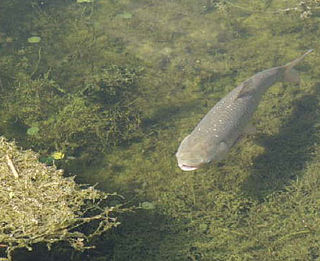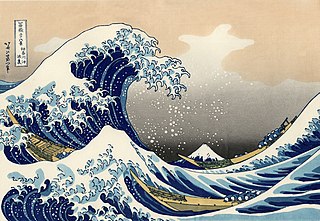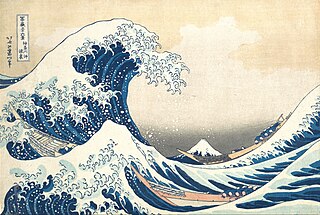
Carp are various species of oily freshwater fish from the family Cyprinidae, a very large group of fish native to Europe and Asia.

The common carp or European carp is a widespread freshwater fish of eutrophic waters in lakes and large rivers in Europe and Asia. The native wild populations are considered vulnerable to extinction by the International Union for Conservation of Nature (IUCN), but the species has also been domesticated and introduced into environments worldwide, and is often considered a destructive invasive species, being included in the list of the world's 100 worst invasive species. It gives its name to the carp family, Cyprinidae.

Thomas Richard Carper is an American politician serving as the senior United States Senator from Delaware, serving since 2001. A member of the Democratic Party, Carper served in the United States House of Representatives from 1983 to 1993 and was the 71st Governor of Delaware from 1993 to 2001.

The Central League or Ce League is one of the two professional baseball leagues that constitute Nippon Professional Baseball in Japan. The winner of the league championship plays against the winner of the Pacific League in the annual Japan Series. It currently consists of six teams from around the country. Unlike the Pacific League, designated hitters are not used during Central League home games.

Emergency Government Headquarters is the name given for a system of nuclear fallout shelters built by the Government of Canada in the 1950s and 1960s as part of continuity of government planning at the height of the Cold War. Situated at strategic locations across the country, the largest of these shelters are popularly referred to as "Diefenbunkers", a nickname coined by federal opposition politicians during the early 1960s. The nickname was derived from the last name of the Prime Minister of the day, John Diefenbaker, who authorized their construction. Over fifty facilities were built along several designs for various classes of service.

Several species of heavy-bodied cyprinid fishes are collectively known in the United States as Asian carp. Cyprinids from the Indian subcontinent—for example, catla and mrigal —are not included in this classification and are known collectively as "Indian carp".

Canadian Forces Station Carp is a former Canadian military facility located in the rural farming community of Carp, Ontario, approximately 30 km (19 mi) west of downtown Ottawa.
The Common Address Redundancy Protocol or CARP is a computer networking protocol which allows multiple hosts on the same local area network to share a set of IP addresses. Its primary purpose is to provide failover redundancy, especially when used with firewalls and routers. In some configurations, CARP can also provide load balancing functionality. CARP provides functionality similar to VRRP and to Cisco Systems' HSRP. It is implemented in several BSD-based operating systems and has been ported to Linux (ucarp).
Cootes Paradise Marsh is a wetland at the western end of Lake Ontario, on the west side of Hamilton Harbour. It is located in the city of Hamilton, Ontario, Canada. It is owned and managed by Royal Botanical Gardens (RBG), a charitable organization established in 1941 by the Government of Ontario. The marsh is part of the Cootes Paradise Nature Reserve, with these lands representing 99% of the unaltered lands along the local Lake Ontario shoreline. The site is a National Historic Site, a Nationally Important Bird Area (IBA), and an Important Amphibian and Reptile Area (IMPARA). Cootes Paradise is sometimes also called the Dundas Marsh.

Pymatuning State Park is a Pennsylvania state park covering 21,122 acres (8,548 ha) in Conneaut, North Shenango, Pine, Sadsbury, South Shenango, West Fallowfield and West Shenango Townships, Crawford County, Pennsylvania, in the United States. Pymatuning State Park is the largest state park in Pennsylvania and contains the 17,088 acres (6,915 ha) of Pymatuning Lake, three-quarters of which is in Pennsylvania and one-quarter of which is in Ohio. A three-mile (5 km) causeway extends between Pennsylvania and Ohio near the center of the lake. The lake provides fishing and boating year round. There are two natural areas, Clark Island and Blackjack in the park. The park is also home to the University of Pittsburgh's Pymatuning Laboratory of Ecology. Like all Pennsylvania state parks, admission to the Pymatuning State Park is free. The northern access for Pymatuning State Park can be reached from U.S. Route 6 and the southern access is reached from U.S. Route 322.

Minhwa refers to Korean folk art produced mostly by itinerant or unknown artists without formal training, emulating contemporary trends in fine art for the purpose of everyday use or decoration. The term "minhwa" was coined by Yanagi Muneyoshi.

Hartwick Pines State Park is a 9,762 acres (3,951 ha) state park in the U.S. state of Michigan, located in Crawford County near Grayling and Interstate 75. It is the third largest state park on Michigan's Lower Peninsula and the state's fifth-biggest park overall. The park contains an old-growth forest of white pines and red pines that resembles the appearance of all of Northern Michigan prior to the logging era.
Carp Road is an arterial road in Ottawa, Ontario, Canada that runs between Fitzroy Harbour and Stittsville, through the village of Carp. The road is located in the city's west end, beginning in Fitzroy Harbour at Galetta Side Road and ending in Stittsville at Stittsville Main Street. Most of the route is rural with the exception of Stittsville where the road travels in a residential development. Ottawa Regional Road #5 continues as Stittsville Main Street south of Carp Road, then becomes Huntley Road south of Stittsville toward the town of Richmond.

White Pine is an unincorporated community and census-designated place in Ontonagon County in the U.S. state of Michigan. As of the 2010 census, its population was 474.

Chester F. Phelps Wildlife Management Area is a 4,539-acre (18.37 km2) Wildlife Management Area located in Fauquier and Culpeper counties, Virginia. It contains over 1,000 acres (4 km2) of open land previously used for agriculture; additional open areas may be found within the forests on the property. Most of the terrain is rolling, low, and shallow; the steepest land can be seen near the Rappahannock River, which forms a large part of the property's western border. A number of small streams cross the land, and a three-acre (12,000 m2) pond is located near its center. The forests on the property contain both pine and hardwood.

The Hiroshima Toyo Carp are a professional baseball team based in Hiroshima, Japan. They compete in the Central League of Nippon Professional Baseball. The team is primarily owned by the Matsuda family, led by Hajime Matsuda, who is a descendant of Mazda founder Jujiro Matsuda. Mazda is the largest single shareholder (34.2%), which is less than the portion owned by the Matsuda family. Because of that, Mazda is not considered the owner firm. However, the company connection is highlighted in the club name; until 1984, Mazda's official name was Toyo Kogyo Co., Ltd..

This covered jar with a carp design is a piece of porcelain from the Jiajing period of the Ming Dynasty in China, currently located in the Indianapolis Museum of Art, which is in Indianapolis, Indiana. Created between 1522 and 1566, it is exceptionally large and elaborate and would have been a source of great prestige for its owner.
Appert Frères was a French company specializing in glassware, active from 1832 to 1947.
















